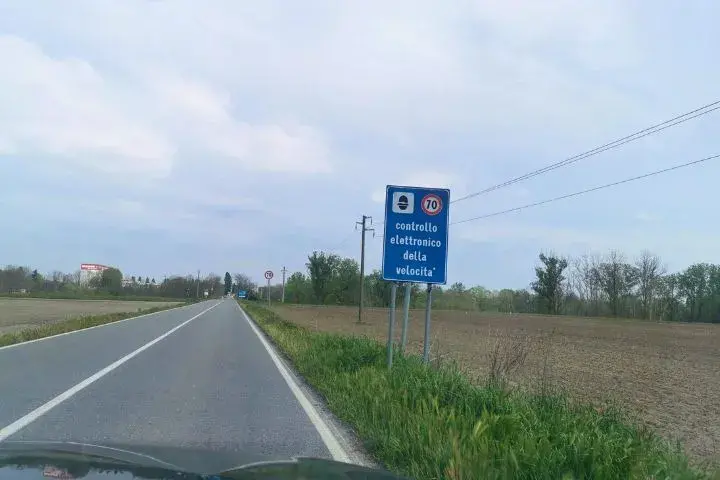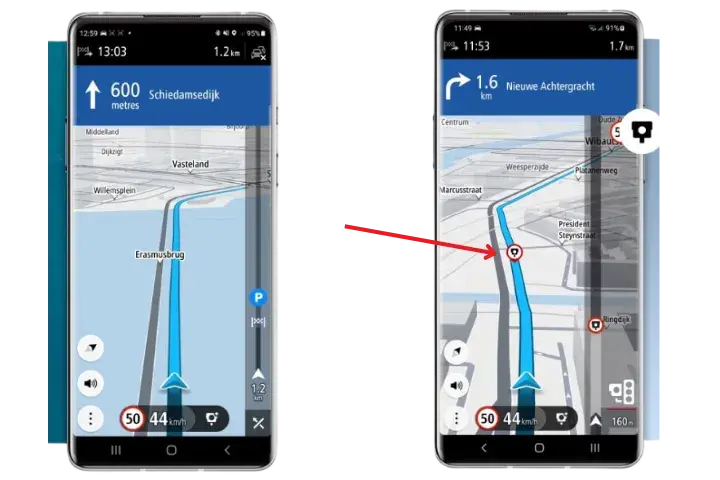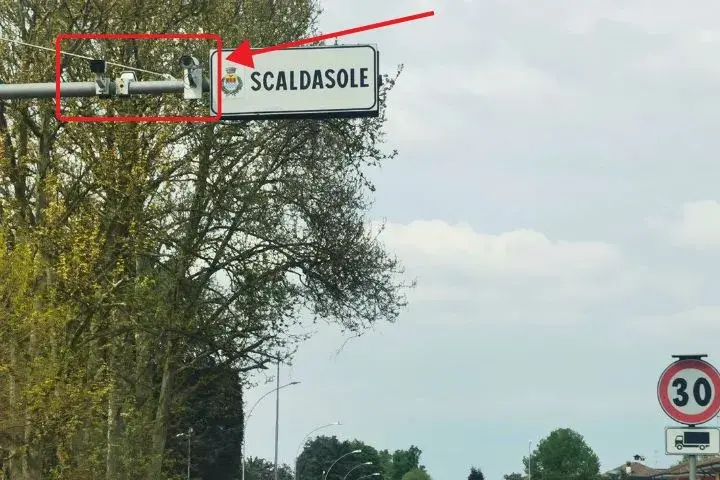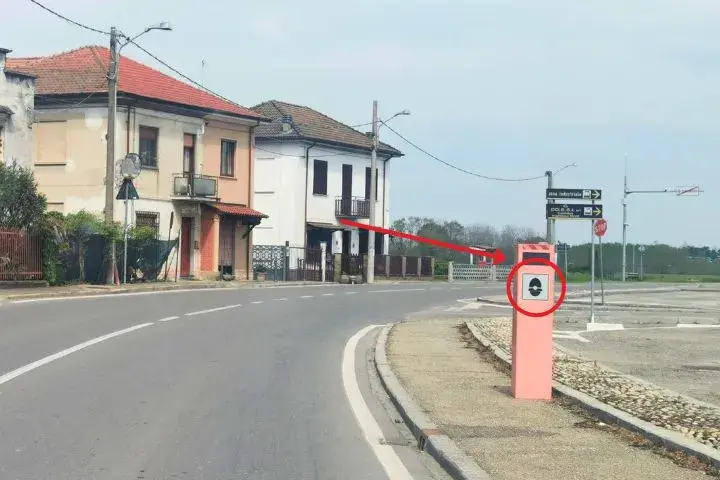Speed Camera Detection in Europe: Complete Guide for 2025

by Asia A. | Last Updated November 23, 2025

Did you know that drivers in Europe face over €1 billion in speed camera fines each year? As road safety measures intensify across the continent, understanding how to detect and respond to speed cameras has become essential knowledge for both tourists and locals.
Whether you’re planning a European road trip or navigating your daily commute, staying informed about speed enforcement technologies can save you from unexpected fines and penalty points.
In this comprehensive guide, we’ll explore everything you need to know about speed camera detection in Europe, from legal considerations to the most effective detection methods available in 2025!
Legal Status of Speed Camera Detectors in Europe
Let me tell you, navigating the legal maze of speed camera detection across Europe can be a total headache! During our last road trip through France and Germany, we learned this the hard way.
First things first – you gotta understand the difference between devices. Speed camera detectors use radar to actively spot cameras, warning devices just use GPS and pre-loaded locations, and jammers actually block detection equipment (big no-no almost everywhere!).
While the EU doesn’t have one blanket rule, most countries have their own specific laws. France is very strict – they’ll slap you with a €1,500 fine and confiscate your vehicle if you’re caught with a detector! Meanwhile, Germany allows passive GPS warnings but bans active radar detection.
The landscape’s constantly changing, too. Just this year, Spain tightened restrictions while Portugal slightly relaxed theirs. Trust me; it’s worth checking before every trip!
Country-by-Country Speed Camera Detection Laws
Keeping track of speed camera laws across Europe is like trying to remember which side of the road to drive on in each country! After 15+ trips across the continent, I’ve finally gotten a handle on it.
In Western Europe, it’s a mixed bag.
- France is crazy strict – any detector can get your car impounded and your wallet €1,500 lighter!
- Germany allows passive GPS warnings but will fine you €75+ for active detectors.
- Spain recently banned all types in 2024
- Italy sorta tolerates GPS systems but officially prohibits detectors.
- The UK lets you use GPS warnings, but nothing that actively detects.
- Sweden and Norway follow similar rules, but Finland’s are more relaxed.
- The Baltic states? Honestly, regulations change so frequently there that I’ve had to check their transport websites before each visit!

Eastern Europe gets tricky.
- Poland allows GPS warnings but bans active detectors with fines of around €500.
- The Czech Republic? Total ban with hefty penalties.
Don’t even get me started on the inconsistencies in the South!
- Greece is surprisingly lenient.
- Croatia strictly enforces anti-detector laws during the tourist season.
GPS-Based Speed Camera Warning Systems
GPS warning systems have been a total game-changer for our European road trips! Unlike radar detectors, these babies work by comparing your location against a database of known speed cameras. The system chimes in with a friendly “heads up!” when you’re approaching one.
The beauty is that GPS warning systems are legal in most European countries (except a few hardliners like Austria), since they’re not actually “detecting” anything.

We’ve been using Waze for years, but the 2025 update to TomTom GO really knocked our socks off with its accuracy! CamerAlert and Radarbot Pro have also stepped up their game this year.
Dedicated GPS units from Garmin cost a pretty penny (around €250) but offer better reliability than phone apps, which sometimes glitch out in rural areas. Trust me on this – we lost signal in rural Spain and racked up a €200 fine!
The subscription services like CamerAlert Premium (€5.99/month) cover Western Europe brilliantly, but get spotty in Eastern countries. I’ve found the community reporting features on Waze to be surprisingly reliable – saved us from a sneaky mobile trap outside Barcelona last month!
Radar and Laser Detection Technologies
Okay, so radar detectors aren’t rocket science, but they’re pretty darn clever! They basically pick up the radio waves that speed cameras emit when measuring your speed.
Laser detectors (lidar) work similarly but detect light pulses instead of radio waves. We installed one in our rental car in Italy before realizing it wasn’t exactly welcome there!
The legal situation is super confusing. Active radar/laser detectors are flat-out illegal in France, Germany, and most of Scandinavia, with fines of up to €2,000 in some places! Switzerland will actually confiscate your car if they catch you – learned that one from a fellow traveler who spent three days sorting out that mess.
The best systems we’ve tested can detect radar from about 2-3 km away on open roads, which gives you plenty of time to check your speed.
- K-band detection technology seems most reliable across Europe.
- X-band is still used in some Eastern countries.
- Combo systems that include GPS warnings along with radar detection give you the best protection, but remember to disable the active detection features when crossing into countries where they’re illegal!
For installation, we’ve found that a clean windshield mount works better than a dashboard placement. And don’t forget to update the firmware before your trip – manufacturers regularly improve detection algorithms!
Speed Camera Types Across Europe

Let me tell you, European countries have gotten super creative with their speed enforcement tech! After driving through 9 countries last summer, I feel like I’ve seen every type of camera out there.
- Fixed cameras are the easiest to spot – those big yellow or gray boxes mounted on poles. France has those distinctive orange Mesta Fusion cameras, while the UK’s GATSO cameras have that iconic yellow and black striped design. Most GPS apps catch these reliably.
- Mobile traps are a real pain in the neck! In Germany, they often hide in unmarked vans parked along roadsides, while Italy’s police sometimes use disguised camera setups that blend right into the environment. We got nabbed by one outside Milan that was tucked behind a highway sign!
- Average speed zones (SPECS in the UK, Tutor in Italy) are becoming more common. These clever systems measure your speed between two points – sometimes covering 20+ miles! They got us on a long stretch of the A1 in Italy, where we thought we were being careful.
- Red light cameras at intersections – many now pull double duty and will catch speeders too, especially in France and Spain.
The newest tech hitting European roads in 2025 includes:
- Those sneaky “invisible” infrared cameras in the Netherlands.
- AI-powered mobile units in Sweden that can simultaneously monitor multiple lanes.
- Portugal‘s rolling out drone-based speed detection this year too – the future is here, and it’s watching your speedometer!
⭐ Related Guides for Speed Enforcement and Safe Driving in Europe
Staying within speed limits is crucial — and knowing how enforcement works is just as important as following the signs. These guides help you understand speed cameras, fines, routing apps and driving tools so you avoid surprise penalties across Europe.
Read Next:
- Understanding European Road Signs – Know how speed-limit signs, cameras and warning symbols vary by country.
- European Roundabout & Priority Rules – Many speed cameras are positioned near junctions; understanding priority rules helps you navigate safely.
- Best Road Trip & Navigation Apps for Europe – Use tech tools to display speed limits, camera alerts, and live traffic on unfamiliar roads.
- How to Plan a European Road Trip – The main pillar for routes, logistics, safety and documentation.
- Alpine Driving Tips in Europe – Speed management becomes even more critical in mountainous terrain with changing limits and conditions.
Best Practices for Legal Speed Awareness
After so many years of European road trips, I’ve picked up some foolproof ways to avoid those nasty speeding tickets! The simplest approach is:
- Using navigation apps with legal warnings – Waze and TomTom GO have saved our bacon countless times, especially in France, where fines start at €135!
- Setting your cruise control about 5 km/h below the limit is a game-changer. Most European countries have zero-tolerance policies, unlike the 10% grace period we’re used to back home. We learned this the hard way outside Munich last year!
- Newer cars often come with built-in speed limit recognition that reads road signs and warns you – totally worth paying extra when renting a car. Speaking of rentals, always ask if they have pre-installed GPS warnings ’cause nothing ruins a vacation faster than coming home to surprise speeding tickets from abroad.
- In high-enforcement areas like Switzerland and Northern Italy, we’ve found it’s best to hang back and follow local drivers who know where the traps are. And always, ALWAYS slow down when entering towns – that’s where most of the cameras lurk!

Future of Speed Enforcement and Detection
The future of speed enforcement across Europe is looking pretty wild! During our recent road trip through Germany, we spotted those new AI-powered camera systems being tested on the Autobahn. These smart cameras don’t just measure speed – they can detect phone use and seatbelt violations, too!
By late 2025, most EU countries plan to roll out connected vehicle systems that communicate directly with your car. Several new Mercedes and BMW models already receive speed limit data through cellular networks, giving real-time warnings without needing separate devices. It’s basically a cat-and-mouse game where both sides keep getting more sophisticated!
The privacy implications are kinda concerning though. Those new ANPR (Automatic Number Plate Recognition) networks can track your entire journey across multiple countries. We noticed signs for this system being installed along the French-Spanish border last month.
Several European Parliament members are pushing for standardized regulations that would allow only passive warnings while banning active detection technologies entirely. The draft legislation should be voted on by fall 2025.
The scariest development? Those machine learning algorithms are being developed in Sweden that can predict speeding behavior based on driving patterns. Big Brother is definitely watching!
Conclusion
Navigating Europe’s roads requires not just awareness of speed limits but also an understanding of the complex landscape of speed camera detection regulations.
By staying informed about the legal status of detection methods in each country and using appropriate technologies, you can enjoy your European driving experience without the stress of unexpected fines.
Remember that the safest approach is always to adhere to posted speed limits, but having advance warnings of enforcement zones can provide peace of mind on unfamiliar roads.
Drive safely, stay informed, and enjoy the journey across Europe’s diverse and beautiful roadways!
💬 We’d love to hear from you!
Have questions, tips, or personal travel stories to share? Drop them in the comments below — your insights help fellow travelers plan their adventures too.












